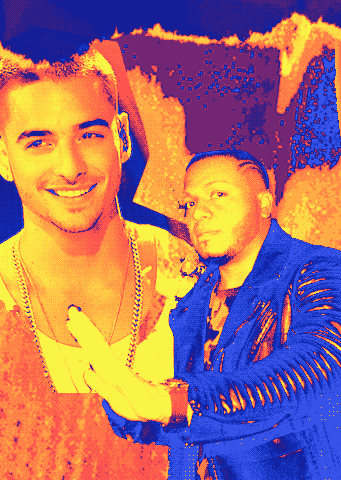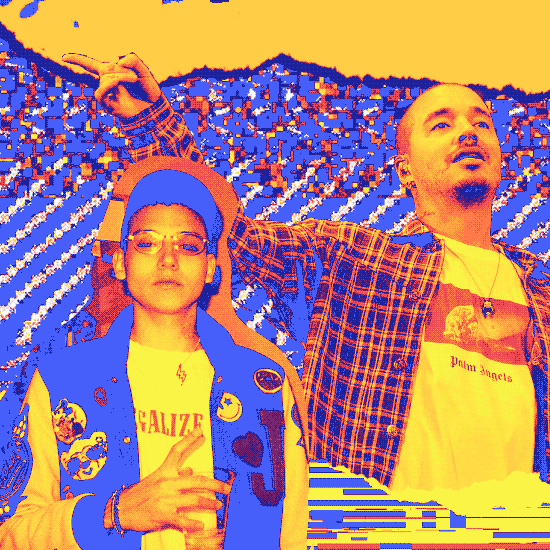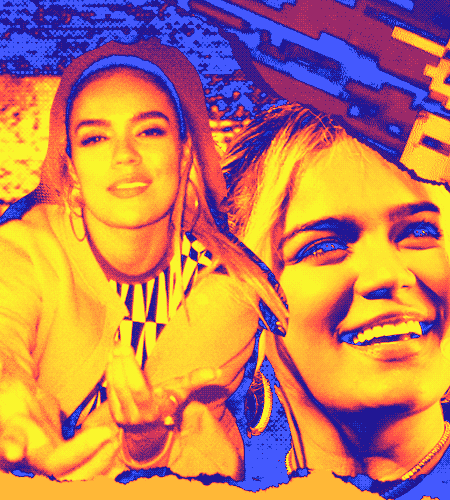Reggaeton began organically as a transformation of dancehall, hip-hop, and reggae en español. As an afro-diasporic movement, Panama, Puerto Rico, Jamaica, the Dominican Republic, and New York are all pivotal landscapes in the style’s musical evolution. Through Tu Pum Pum: The Story of Reggaeton, a column by Eduardo Cepeda, we’ll explore reggaeton’s history, sociopolitical struggles, and its impact as a global force in music and culture.
Bad Bunny isn’t the only household urbano name whose career began in a grocery store. Years before El Conejo Malo went from packing verduras to packing stadiums, a young boy who would later take the stage as Nicky Jam also hustled for tips while busting freestyles for curious grocery shoppers. What Nicky didn’t know then is that his success during reggaeton’s first big ascent wouldn’t be his only legacy. He’d first hit rock-bottom, but the Puerto Rican singer would eventually re-emerge as one of the key figures in a new wave of Colombian reggaeton that drove the genre’s second major surge.
By the mid-2000s, Nicky Jam’s once-promising career fizzled. After a very public beef, his former mentor Daddy Yankee no longer considered the young reggaetonero a friend, and drug and alcohol abuse derailed his opportunities. Jam withdrew from the spotlight and took a job as a hotel lounge singer to pay the bills. His addictions destroyed what was left of his career, and soon after, a late 2000s stint in prison for carjacking seemed to finally finish the job.

However, when all hope seemed lost, Jam noticed something. Colombians were listening to his old tracks in overwhelming numbers. Sensing a clear opportunity, he kicked the vices and made the trek to Colombia, where it seemed as though his stardom never faltered. What he found was a bustling local reggaeton industry, comprised of future star songwriters and producers like the Infinity Music crew, Saga WhiteBlack, Chez Tom, the Rude Boyz, and Ovy on the Drums, among others. In the beginning, artists like Final y Shako, Reykon, Golpe a Golpe – then J Balvin and Karol G – propelled the scene in Medellín. Radio stations like Tropicana and Rumba Estereo, and labels like Codiscos, which helped re-establish Nicky Jam, provided an infrastructure that helped early Colombian reggaeton artists navigate the industry.
At the time, Colombian reggaeton had a heavier, Luny Tunes-inspired sound, but Nicky embraced melody, a product of the hotel gig that forced him to develop his talents as a vocalist. The country received Jam with open arms, and a copacetic relationship quickly formed. Colombia gave Jam an attentive following and he gave Colombia reggaeton legitimacy.
One of the biggest breakthrough moments for the movement came in 2013, when J Balvin released his single “6 AM” featuring Farruko. The song peaked at No. 3 on the Billboard Hot Latin charts, and catapulted the then 27-year-old singer to newfound international fame. Artists like Karol G and Maluma soon found their own major success, and a movement gradually emerged out of Colombia.

The new Colombian reggaeton sound developed in the mid-aughts in Medellín, having gradually evolved from copy-and-paste versions of the popular Puerto Rican reggaeton of the time into a more dancehall-derived sound. This shift coincided with the Mode Up movement, a creolized version of Jamaican dancehall that sprouted up on the northern islands of Colombia around 2005. English colonizers once ruled these islands, so San Andres and Isla de Providencia’s relationship to Anglophone Caribbean music remains strong. Through the Mode Up movement, artists like S.A. Finest, DJ Buxxi, and Bogotá’s El Freaky Colectivo quickly rose in the underground global bass scene, and could have eventually filtered into the mainstream sound.
With the softer, glossier sound, these artists have found an opening to try to capitalize on urbano.
Whatever the source, mainstream Colombian reggaeton marked a softening of the perreo that had once ruled the charts. The new brand of reggaeton traded hard-hitting dembow with more velvety riddims and also toned down the lyrical content by focusing on romantic lyrics. “Our audience is so broad that we have to make videos where women look beautiful and conservative and are treated with respect, because the videos are seen by kids and adults. Other reggaetoneros who do what they do are targeting one audience. They don’t have the same responsibility we do,” said J Balvin in a 2017 interview with Billboard.
This was in stark contrast to the reggaeton of the early 90s, which often found itself mired in negative attention from the media and the Puerto Rican government. As we’ve discussed before, while early underground found its footing, Puerto Rican lawmakers tried to stomp it out. One of the chief complaints was that the lyrics associated with the young, burgeoning genre promoted violence, rampant sexuality, and drug use.

Perhaps the Colombian approach was one of self-preservation – or simply shrewd business acumen. Whatever the intentions, the results were undeniable: reggaeton found itself in the spotlight again, and this time, the easily palatable sound made the genre an attractive pivot for artists, something that has sparked controversy, as outsiders in the music industry have used reggaeton as cultural capital to re-energize their careers.
Turn-of-the-century reggaeton saw Shakira and Alejandro Sanz dabble in the genre, and in recent months, Latin American pop stars like Thalia and Gloria Trevi have jumped on the dembow wagon. With the softer, glossier sound, these artists have found an opening to try to capitalize on urbano, without any of the added baggage the original, harder-edged sound often brought. While this new iteration of reggaeton has certainly led to pandering by opportunistic pop merchants, it’s also created new stars like Balvin, Karol G, Feid, and Farina, among others.
Colombia’s new reggaeton wave can be perceived as a sanded-down, pop-oriented sound, and a shift from the genre’s black roots. It’s a common story in the music industry: marginalized genres gain popularity, and they inevitably go through feeding frenzies, in which white and lighter-skinned artists often receive an unbalanced share of the attention and praise. And yet, the Colombian movement has simultaneously helped bring the spotlight back on the genre. Emerging artists from other countries have benefitted from the increased attention and resources from major labels and streaming platforms, even while the Saturday Night Fever-ization of reggaeton caters to an audience that could never be bothered with the genre to begin with.







